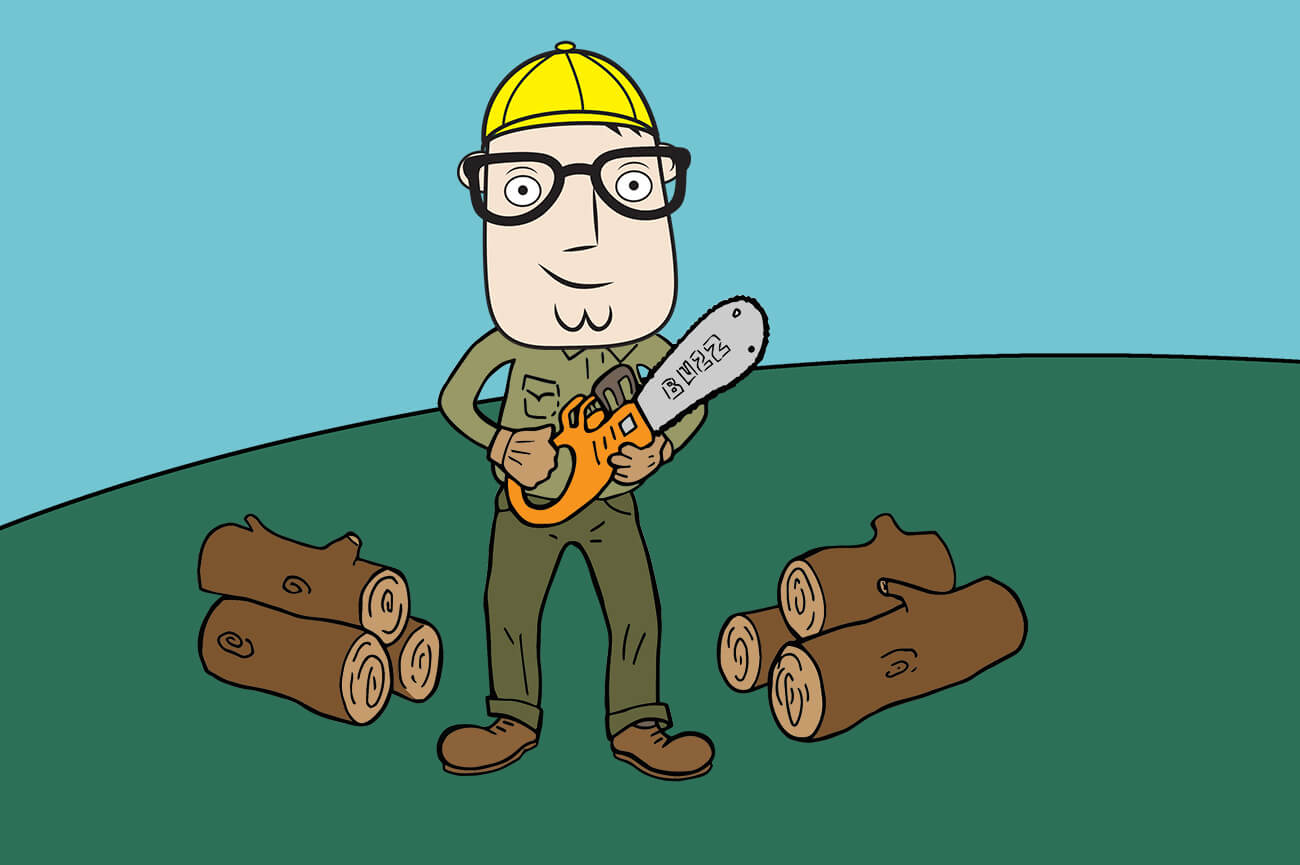Tree trimming is an extremely dangerous job and, unless you really know what you’re doing, might best be left to professionals. Tree trimmers have a fatality rate that is more than three times that of the average worker. Most occupational fatalities result from either tree trimming or tree pruning, although chipping equipment also creates hazards.
The Dangers of Tree Trimming
The fact of gravity and necessity of climbing, in itself, adds risk to the job. One slip or error in judgment can cause a fall. Trees often contain unseen fractures or other structural flaws in branches, which can also result in falls and other accidents. Chainsaws are powerful and, if not used properly, can kick back towards the user, causing injury or death.
Trees near electrical lines are especially dangerous to cut, as one false move can result in the operator getting electrocuted. Most services prefer to use buckets in these situations, but what if the tree is in a location not accessible by trucks? While small trees can be easily pruned by an owner with a little self-education, bigger work is usually better left to the pros. But what kind of pro do you need for your tree trimming (or felling job)? A tree trimming service or an arborist? What’s the difference?
Arborist or Tree Trimmer?
An arborist generally has studied the bio-mechanics of trees and knows about diseases and how to treat them. They are something akin to “tree doctors.” They can make recommendations for planting, for treating disease, for mulching and more. Most of them can safely prune a tree, fell a tree, and plant one too—especially if they have received training and are certified (note that all states may not have certification).
Tree trimmers may also have certification (check with your state or local authorities), but they often have less education about tree health and may not prune a tree with the same aesthetic finesse as an arborist. If you are looking to balance and shape a tree—and keep it from growing into your house, discuss your objectives and make an informed decision about which professional is best for your job. Of course, if you have a heritage tree, you may want to go with an arborist who will likely give the tree a little more attention when trimming.
There is actually a best time of year to prune a tree, and that can vary depending on the species. Late winter is a good time to prune most trees. Summer is the worst time. There is actually an American standard for tree pruning and you can ask your professional if they trim in accordance to it. It's the ANSI A300 standard (set by the Tree Care Industry Association). Specifications include how and where branches are cut and how much foliage should be removed (plus other recommendations).
Insurance
When hiring a tree trimming professional, this is one contracting situation where you absolutely need to get proof of insurance and make sure the company’s workers are insured by that policy. It is not unreasonable to get it in writing. Get a copy of the policy and call the insurer to confirm. If a worker falls or is hurt on your property, you may be liable, which leads to the next point, which is, you also need adequate home insurance coverage. Call your home insurer to see if your liability coverage is what it should be. Many homeowners are inadequately covered.
While it may be tempting to let your handy neighbor cut up wood or fell a tree for $50, consider the danger and liability before you make that commitment.
Cost of Felling a Tree
Most trees will cost a minimum of $900 to fell, and considerably more for large trees or difficult jobs. If the tree is near electrical lines or close to a house, expect it to be more. And if it requires a lot of climbing and branch cutting before felling it, same thing.
Expect the pro to cut up logs, chip branches, and haul away debris as part of the job. Make sure you discuss the services they will render as part of your quote. Note that stump grinding is rarely included in tree trimming quotes and many tree trimming companies do not offer that service. If you need both trimming and grinding done, you may save money by hiring a company that owns stump-grinding equipment and offers that as a service.
Cost of Trimming a Tree
The cost for trimming a tree will vary widely based on the size and height of the tree and the size of the branches needing pruning. A beginning price would be $300. It could be as high as $1000, with $600 being a median price. Take some photos of your trees and get some quotes for a better estimate.
Cost of Stump Grinding
Sometimes small stumps can be pulled out with a truck or a tractor. Don’t try it unless you know what you’re doing. Larger stumps generally need to be recessed beneath ground level using a stump-grinding machine. Stump grinding can cost $100-$300, depending on the size of the stump. If you have multiple stumps to grind, it’s usually cheaper per stump. Stump grinding is one of those jobs where it pays to get multiple quotes. If you have a tree service cut down the trees, consider hiring a company that also offers stump-grinding services, as it might save you a travel charge. When seeking quotes, measure the diameter of the stumps you want removed, plus the height from the ground. You can also take photos. Generally, the owner is responsible for the cleanup, but you can ask if they haul the debris.
Are You a Professional?
Requests for your services are coming in left and right. Let’s connect and grow your business, together.


